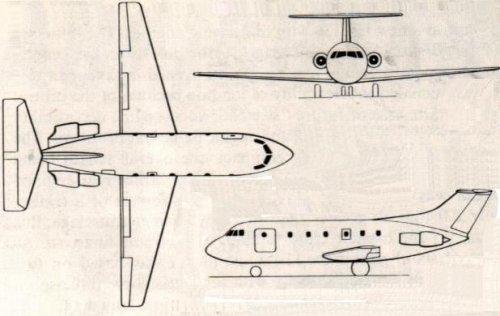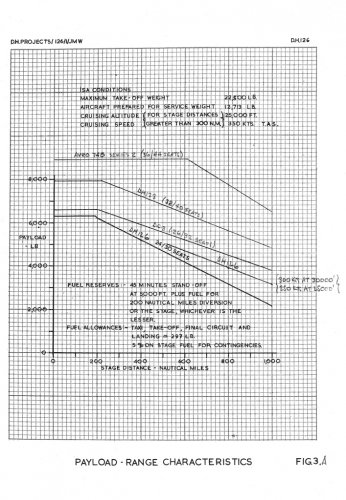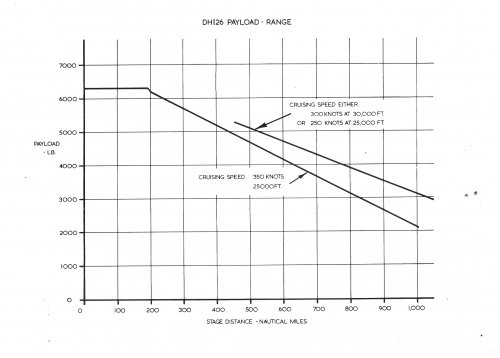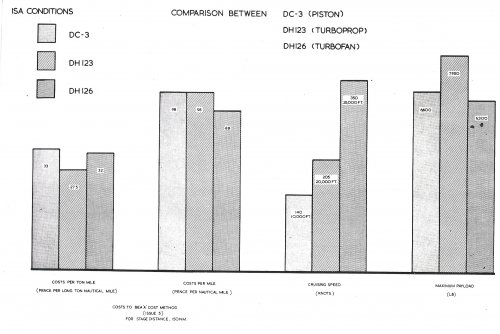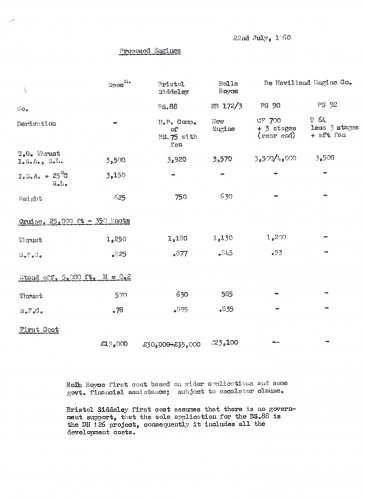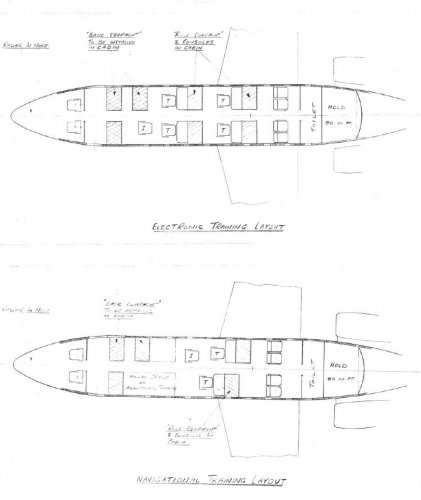- Joined
- 28 January 2008
- Messages
- 635
- Reaction score
- 512
I am first-time poster so apologies for any breaches in the forum etiquette with this post, feel free to shunt it into any category that may be more suitable.
I have recently been looking at the Secret Projects Forum > Research Topics > Designation Systems > De Havilland aircraft thread and saw the entry about the DH-126, a project for 35-50 passenger airliner with two rear mounted turbofans.
I have a de Havilland "Additional Information" document on the DH126 from the summer of 1960 that may be of interest.
It appears to be a development of the DH125 rather than a full blown new design. The document describes the type as "a small turbofan airliner" with a good deal of the aerodynamic and structural details of the DH125. Is basic selling price was estimated as £140,000.
Some interesting details mentioned include:
Proposed turbofans engines:
Bristol Siddeley BS.88
Rolls Royce RB 172/3 (new engine)
de Havilland PS 90
de Havilland PS 92
Weights:
Empty: 11,955 lbs
Operators items (crew & emergency equipment): 758 lbs
Payload: 6,300 lbs
Fuel: 3,387 lbs
Total take-off weight: 22,400 lbs
Civil Applications:
The type has a payload and range graph quoting between 24-30 seats.
"The DH126 will suit the routes of most of the BOAC Associates fairly well namely:
British West Indian Airways
West African Airways (Ghana and Nigeria)
Malayan Airways
Various small airliners
In general, apart from an odd aerodrome such as Jos in West Africa, the aerodrome performance of the DH126 was more than adequate."
Military Applications:
A navigational trainer version is also described and illustrated with 2 crew, 1 instructor, 2 pupils, 4 passengers plus navigational equipment as a potential Valetta replacement.
An electronic training configuration (2 crew, 1 instructor, 4 pupils, 4 passengers) is also shown as a drawing.
The documents conclusion states "the DH126 can meet the Varsity and VIP Valetta replacement requirements....it would be very suitable as a replacement for the Queen's flight Herons"
I don't know the DH125 Dominie configuration for the RAF - is it similar to the details above?
Summary
The document also compares the DH126 with the DH123 project in its payload/range, operating costs, work capacity and speed graphs.
From the drawings the cabin appears very similar in size to the DH125. Do you think this could be a different use of the designation to the one listed in Hesham's original post.
I hope this is of some interest.
I have recently been looking at the Secret Projects Forum > Research Topics > Designation Systems > De Havilland aircraft thread and saw the entry about the DH-126, a project for 35-50 passenger airliner with two rear mounted turbofans.
I have a de Havilland "Additional Information" document on the DH126 from the summer of 1960 that may be of interest.
It appears to be a development of the DH125 rather than a full blown new design. The document describes the type as "a small turbofan airliner" with a good deal of the aerodynamic and structural details of the DH125. Is basic selling price was estimated as £140,000.
Some interesting details mentioned include:
Proposed turbofans engines:
Bristol Siddeley BS.88
Rolls Royce RB 172/3 (new engine)
de Havilland PS 90
de Havilland PS 92
Weights:
Empty: 11,955 lbs
Operators items (crew & emergency equipment): 758 lbs
Payload: 6,300 lbs
Fuel: 3,387 lbs
Total take-off weight: 22,400 lbs
Civil Applications:
The type has a payload and range graph quoting between 24-30 seats.
"The DH126 will suit the routes of most of the BOAC Associates fairly well namely:
British West Indian Airways
West African Airways (Ghana and Nigeria)
Malayan Airways
Various small airliners
In general, apart from an odd aerodrome such as Jos in West Africa, the aerodrome performance of the DH126 was more than adequate."
Military Applications:
A navigational trainer version is also described and illustrated with 2 crew, 1 instructor, 2 pupils, 4 passengers plus navigational equipment as a potential Valetta replacement.
An electronic training configuration (2 crew, 1 instructor, 4 pupils, 4 passengers) is also shown as a drawing.
The documents conclusion states "the DH126 can meet the Varsity and VIP Valetta replacement requirements....it would be very suitable as a replacement for the Queen's flight Herons"
I don't know the DH125 Dominie configuration for the RAF - is it similar to the details above?
Summary
The document also compares the DH126 with the DH123 project in its payload/range, operating costs, work capacity and speed graphs.
From the drawings the cabin appears very similar in size to the DH125. Do you think this could be a different use of the designation to the one listed in Hesham's original post.
I hope this is of some interest.

